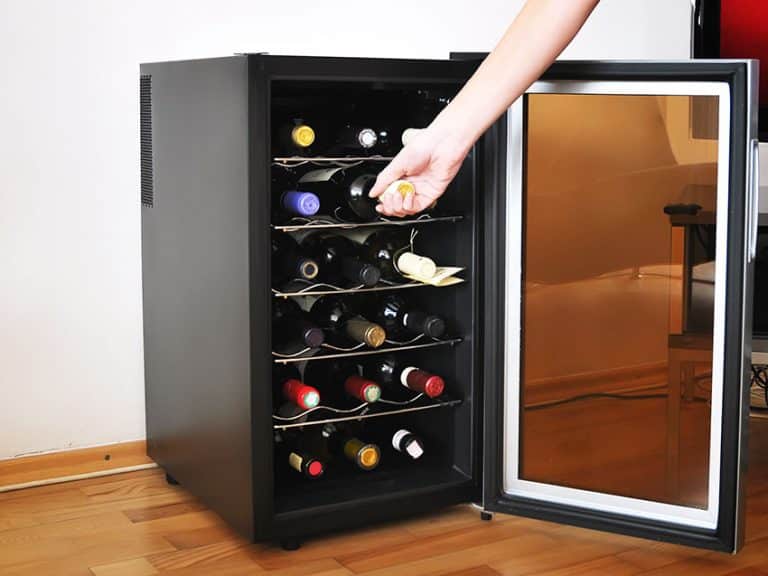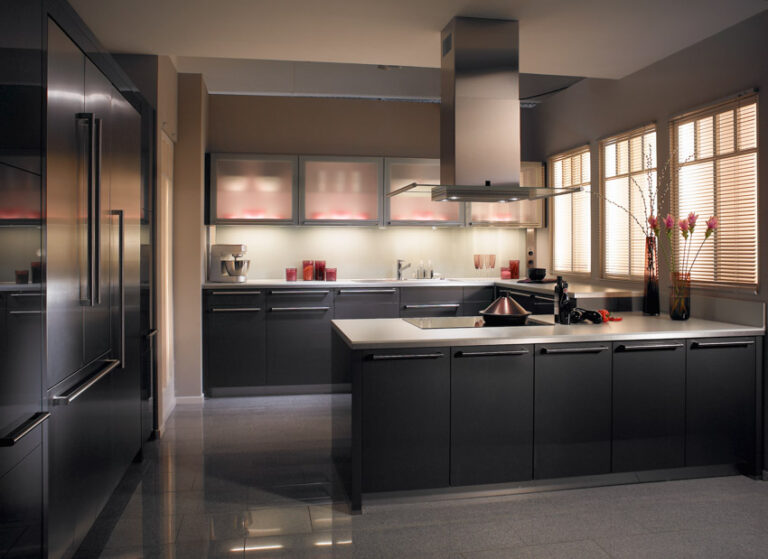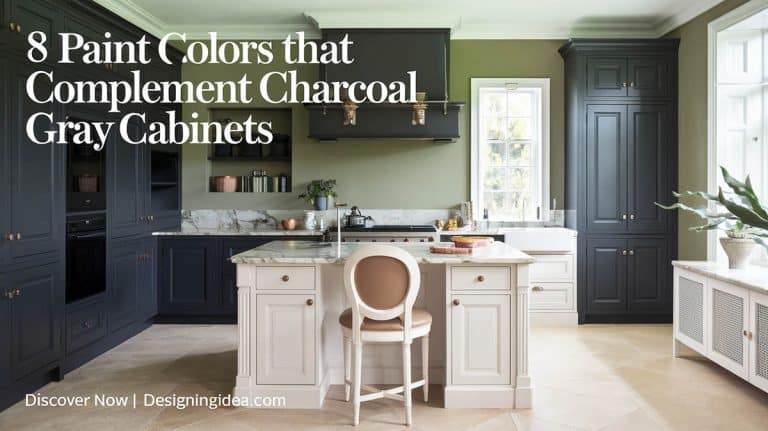Should You Try Painting Your Granite Countertops? (Pros and Cons)

Whether opting to match your backsplash countertop or sprucing up a dated style, painting granite countertops is budget-friendly design solution, with some challenges. Finding the best paint to match your needs can be tricky as there are many types on the market. Another concern is the application and knowing the painting granite countertops pros and cons. Let’s take a closer look to determine if painting your stone countertops is worth pursuing.
Is It Worth Painting Granite Surfaces?
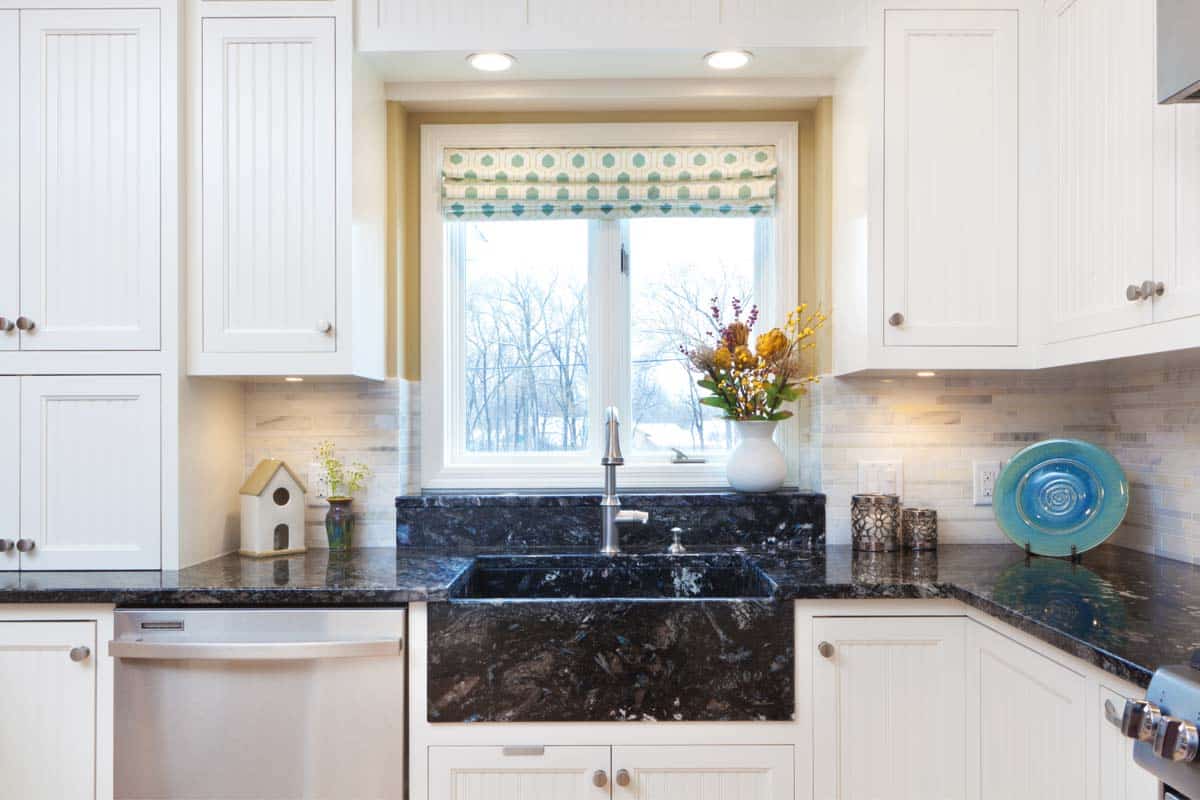
Yes, painting your granite countertops is a great option if you’re updating the look without replacing the stone. It is the simplest way to update an interior or furniture but will require proper surface preparation, installation, and selecting suitable paint types for a natural stone surface. However, painting a newly installed granite countertop is not advisable unless matching color or texture is a priority for an interior design.
A granite slab has a substantial feel, great natural beauty, and permanence—and it is a snap to wipe clean. – Building Outdoor Kitchens for Every Budget, Steve Cory
Pros
Less Costly than Full Replacement: According to Architectural Digest, the price to replace a granite countertop ranges from $40 to $60 per square foot. For painting over, the majority of professional businesses quote their prices between $6 and $14 per square foot.
Painting a countertop rather than replacing the complete thing can save money if your budget is tight. This is useful for replacing a granite surface that has largely reached the end of its useful life.
A Short-Term Fix: When limited funds are available but need a quick fix so a space can be readily used, painting over is the best solution. It doesn’t take much time and can be a DIY project that saves you more from initial costs.
Change of Color is Easier: The overall feel of a space is important in ensuring you are comfortable and not only due to aesthetic reasons. With repainting, you can change the color easily and redo the look in a couple of years with less cost.
Personalization: Changing the desired counter color can reflect your personality. It’s easier and more economical than replacing.
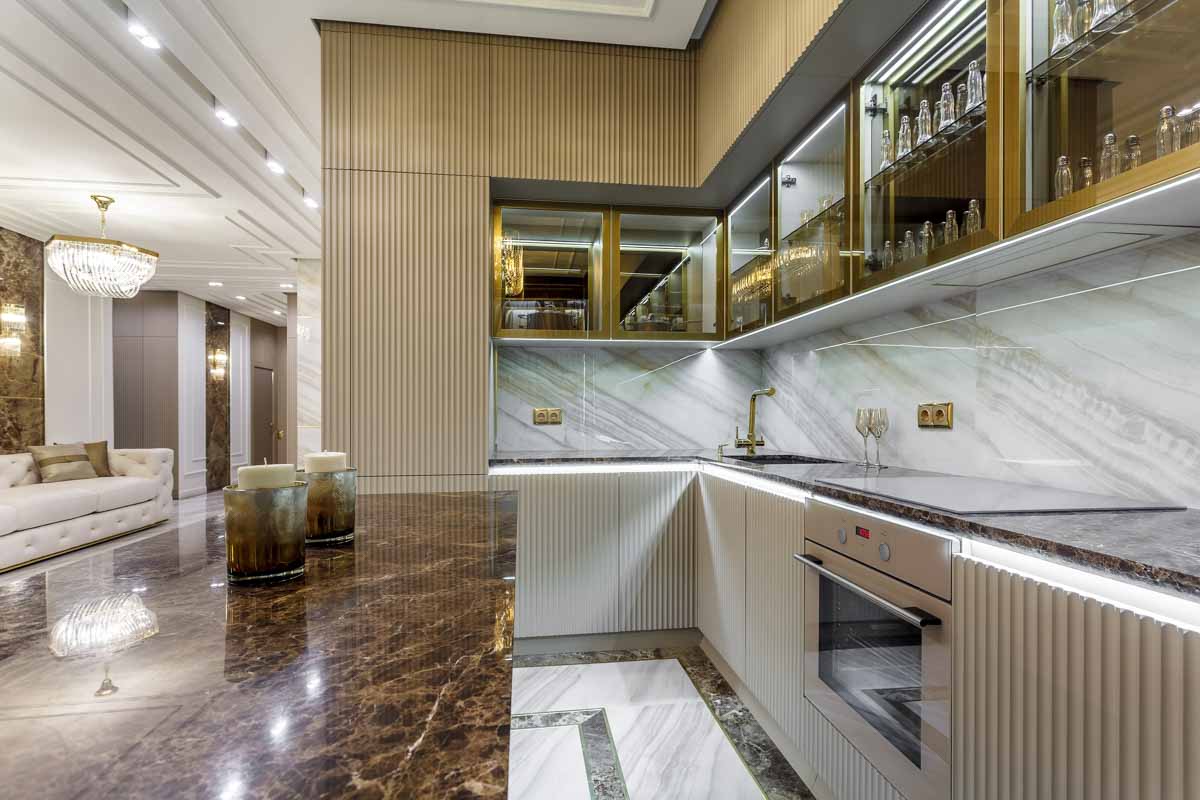
Cons
Appearance and Adhesion: Getting good paint adherence on polished granite surfaces is not always guaranteed, especially if it’s a do-it-yourself job. The finished product might not be as slick or organic-looking as the original stone.
Time consuming: The process of application can be grueling and adhesion is not guaranteed.
Concerns with durability: A painted countertop is most likely less resilient than it is in its natural state. This countertop application might not last as long as your natural granite. Over time, they can be more prone to wear, scratching, and chipping.
Requirements for maintenance: Being more careful during the process can be an inconvenience, along with the maintenance that comes along with it.
Return on Investment and resale value: Natural stone, especially true granite countertops, have a higher investment return than a painted countertop. This may lower the value of your property, especially if the results are not ideal.
What Kind Of Paint Is Best For Granite Countertops?
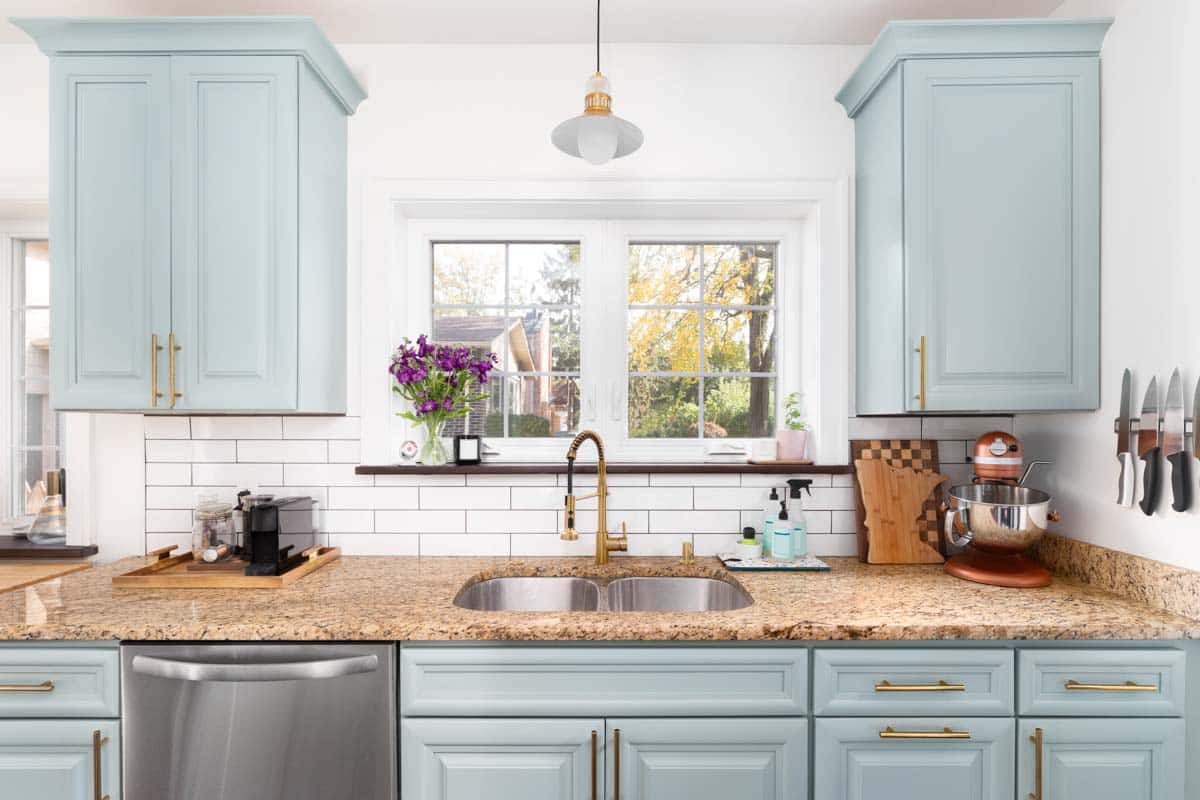
Epoxy-based Paints: From a bathroom to a kitchen countertop, epoxy-based paints are a highly recommended base solution. Like other natural stone materials, granite has pores, and the epoxy-based application seeps through these pores, making a better grip on the material.
It is advised to use similar chemical-based types together to ensure a strong bond between the coats. This prevents peeling or cracking since both layers behave similarly, such as in the curing process.
Countertops receive a substantial amount of wear and tear. With a weaker or low-quality surface, countertops can show deterioration within just several years, especially when used in a kitchen setting. Epoxy-based paints are highly abrasion and impact resistant, making them highly recommended surfaces for high-traffic areas.
Epoxy, when applied, create an impervious protective layer. That is why are virtually epoxy-based products are used for waterproofing applications such as terrace and garage floors.
The waterproof characteristic of epoxy is an important feature for heavy-use countertops, as water and other chemicals can weaken the material’s structural integrity. Sealed-off pores also make it a hygienic surface which means it is unlikely for bacteria or mold growth. Look for food-grade epoxy where it is safe to have food in contact with the surface.
Ensure that the epoxy coating applied to a granite countertop has been fully cured before use. Typically, epoxy-based paints cure about 3 to 7 days. Check the manufacturer’s recommendations before applying the wet application over the countertop.
A drawback of most epoxy-based products is that they tend to yellow when continuously subjected to sunlight. To prevent the yellowing of a countertop, even when installed indoors is to apply a layer of UV-resistant sealant. This is usually applied as a top coat with additional benefits, such as a durable sealant to prevent scratches.
Mineral Paint: When looking for a more environmentally-friendly option to cover granite countertops, mineral paint is a great option as it is usually made from natural pigments with lower VOCs. The smell is not as strong as epoxy, which will guarantee healthier indoor air quality.
It adheres to a countertop well but is more recommended to work with light to moderate use. But taking proper preparatory steps and a quality sealer, mineral paints applied over a granite surface can withstand normal wear and tear even in a kitchen setting.
The application, though, takes longer to cure compared to epoxy and, most especially, acrylic. The curing time for mineral-based products is seven to thirty days, depending on the manufacturer’s recommendation. Curing is important to ensure that the material reaches its maximum strength before using the surface.
The permeability of mineral paints can be a disadvantage for most applications, but if this is not a concern, they are a cost-effective solution. However, you can always seal off the coating if you want the surface to be waterproof. When unsealed, it allows the material to breathe, allowing moisture vapor to dissipate.
Acrylic Paints: Fast-drying compared to epoxy, water-based acrylic is a great alternative to epoxy. If you need a quick turnaround for a project but are durable enough to withstand low to medium wear and tear, acrylic paints are the perfect option.
This option is stronger than mineral or chalk paints. They may not be as long-lasting compared to epoxy, but they are simpler to use and usually have a fainter smell and acceptable VOC levels compared to epoxy.
Acrylic products, similar to mineral, can come as a countertop paint kit to ensure that the proper shade is utilized for a stone counter. Although popular and widely accessible, not all acrylic options are suitable for use on stone surfaces.
Although they are not as long-lasting as epoxy coatings, water-based acrylic applications are a fantastic alternative because they are simple to use and do not emit hazardous chemicals into the atmosphere.
Take note that acrylic paints can dry faster compared to other types. The advantage of fast drying time is that it can be completed quickly between layers. When finding an acrylic product that protects the granite countertop from water, acrylic latex is a great option for holding against heat and water. This will prolong the surface’s service life and provide a more hygienic countertop.
Stone Spray Paints: For small projects, stone or textured spray paints are great for countertops that receive average use. On granite, the spray application can go through the pores of the natural surface, providing a sealed countertop.
Specially formulated for stone applications, these will not easily be chipped off a granite surface. But if aiming for more durability, add a topcoat over the stone spray coating. Famous brands that have stone spray-paint lines are Rust-o-leum, Giani, and Krylon.
Chalk Paints: More known to transform the look of furniture, these are great for smaller granite countertops and receive less wear and tear than the average. You’ll also find lacquer types that provide the finishes’ durability. Lacquer chalk options will show a glossy finish instead of regular chalk paint’s more known textured and matte finish.
Developed by Annie Sloan, a British artist and color expert, chalk paint has gained widespread popularity among DIY enthusiasts, crafters, and furniture painters. This discussion will delve into its features, benefits, and considerations.
Painting Advice
Revamping your countertops? Designer Lily Ardor insists, “These are the products to use!” When it comes to transforming drab counters into a designer dream, Ardor gets straight to the point. “Okay real quick – if I was to do this again, I would first prime the counters with some bonding primer. Also called gripper. It literally adheres to anything and is so strong.”
She speaks from experience, having used this primer when painting her own wood laminate floors years ago. “They held up so well. Never peeled,” Ardor raves.
Her pro tip for application? “I would either use regular latex or roll on epoxy. I think rolling it on is the best option. It gives you a nice thick coat.” But the designer doesn’t stop there. To lock in that pristine finish, Ardor swears by a polyurethane sealer. “I would then seal with the Varathane floor clear finish. Honestly though, if you can get your hands on the Minwax brand, it surpasses the Varathane quality in my opinion.”
Her reasoning is backed by years of rigorous use. “I’ve used it on so many projects. It lasted for over 3 years on my floors and only had light scratches but never peeled or came up.” Ardor sums it up simply: “This combination of primer, paint, and sealer worked the best in my experience. I honestly wish I would have done the same to my counters.”
How Long Does Painting Granite Last?

Painted countertops’ service life depends on many factors, but most brands list an average of 5 to 7 years. Aside from the type used, surface preparation is crucial in ensuring that the coating adheres to the granite surface.
Steps like sanding, removing oils and debris on the surface, or using a primer will help lengthen the products service life. A new application and resealing are other ways to refurbish granite counters.
Epoxy-based paints: Five to Ten years’ service life
Acrylic-based paints: Two to Five years of service life
Stone Spray Paints: 1 to 3 years’ service life
Chalk Paints: 1 to 3 years’ service life
Here’s a video on the step by step process using a kit:




